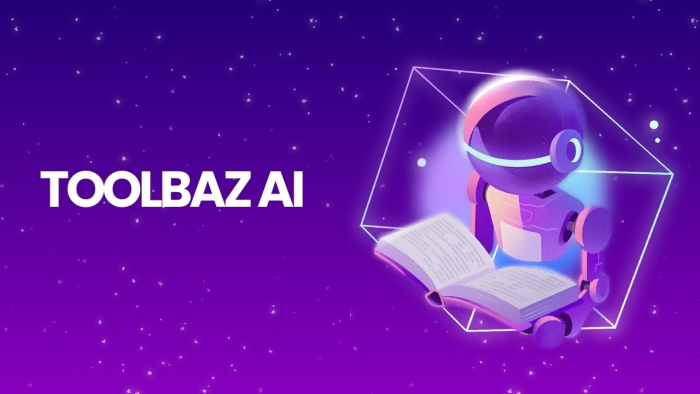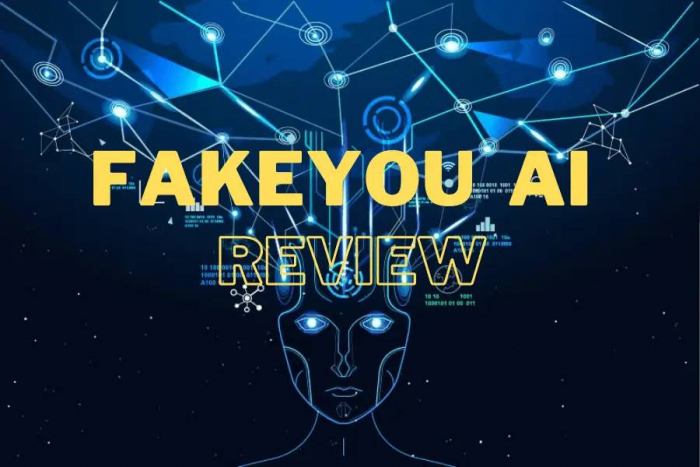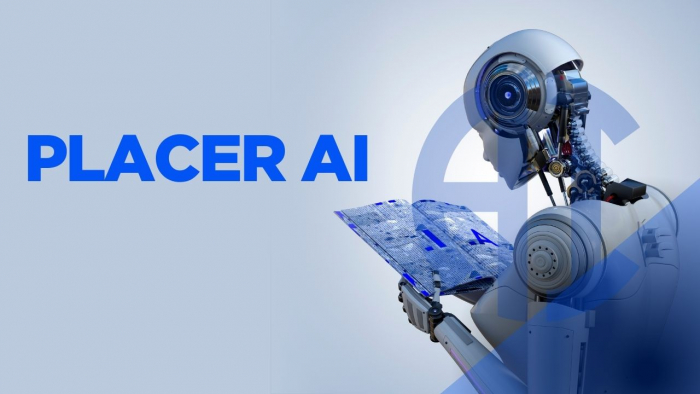Table of Content
- The Rise of Tensor Art in the AI Image World
- Platform Overview: What TensorArt Does and How It Works
- Interface & User Experience
- AI Model Library: Depth & Diversity
- Templates: The Shortcut for Non-Technical Creators
- Pricing & Access: What’s Free vs. Paid
- Community & Collaboration: How Artists Use Tensor.Art
- Safety & Privacy: Is Tensor.Art Secure?
- User Feedback Across Platforms
- Comparison: Tensor.Art vs Stable Diffusion & OpenArt
- Business & Creative Use-Cases
- Pros & Cons Summary
- FAQ (Quick Answers)
- Verdict
- Final Thoughts
The Rise of Tensor Art in the AI Image World
The last two years have been an explosion for generative AI, and Tensor Art has quietly become one of the top platforms empowering creators to build, remix, and share visual models online.
At its core, TensorArt functions as both an AI model marketplace and a creative collaboration hub. Artists use it to find, generate, and fine-tune image models, while developers treat it as a playground for Stable Diffusion experimentation.
With over hundreds of models and templates and official apps on both Google Play and Apple App Store, it’s growing from a niche diffusion site into a serious community tool.
Still, with rapid growth come new questions: How reliable is TensorArt? What’s actually free? And how does it compare to competitors like Civitai or OpenArt?
Platform Overview: What TensorArt Does and How It Works
Tensor Art serves as a cloud-based AI model hub, combining image generation, training, and template sharing within one interface.
When you log in, you’ll notice three main sections:
- The Models page — a searchable collection of AI models covering anime, portrait, cinematic, or 3D art styles.
- The Templates hub — where creators upload pre-set prompts and generation settings.
- The Search tool, allows you to explore trending or tagged results, such as the Anime Portrait Template.
Essentially, you choose a model, insert a template or custom prompt, generate the image, and can instantly share or remix it. It’s built to be intuitive for beginners and flexible for experts.
Interface & User Experience
TensorArt’s desktop interface is clean, responsive, and distraction-free. The sidebar shows trending models and community posts, while the central canvas supports instant previewing.
The mobile apps replicate the same interface, allowing you to queue generations or sync with your profile gallery. On Google Play, users mention fast generation but note occasional lag when generating multiple images.
Community discussions on Reddit echo this, calling TensorArt “a cleaner, more lightweight Civitai.”
What makes it distinct is how easy it feels: no coding, no external setup, just model → prompt → output.
AI Model Library: Depth & Diversity
Tensor Art’s model collection rivals any independent diffusion repository. You’ll find:
- Realistic models for photography and portrait creation
- Anime and manga-style models, with adjustable NSFW filters
- Artistic diffusion models for oil painting, fantasy, and cinematic looks
- Experimental architectures inspired by Stable Diffusion XL and DreamShaper
Each model page displays training data info, sampler type, resolution, and version. Many also link to related templates or example renders.
According to the Tensor Art Articles section, new models are added weekly, and developers can fine-tune existing ones using community datasets.
This blend of open access and creative freedom makes it both a learning platform and a showcase hub.
Templates: The Shortcut for Non-Technical Creators
If you’ve ever struggled with crafting the perfect Stable Diffusion prompt, Tensor.Art Templates are your shortcut.
Each template includes:
- A pre-filled prompt
- Model link
- Sampling method and resolution
- Optional negative prompts
For instance, exploring Tensor Art’s template hub reveals hundreds of ready-made setups , from cinematic portraits to anime character sheets.

You can even remix existing templates or fork them to adjust settings. It’s a powerful way to start creating without needing to learn diffusion syntax.
Every week, trending templates are tagged for visibility, helping beginners discover what styles are performing best across the community.
Pricing & Access: What’s Free vs. Paid
Tensor Art operates on a freemium model:
- Free tier: Unlimited browsing, basic generation, access to public models and templates.
- Paid tier: Faster queues, private model hosting, and higher image limits.
From Play Store feedback, users confirm that the free version is generous enough for casual use, though professional artists often upgrade for speed.
The platform also runs “Boost” tiers for power users, offering priority compute time.
Interestingly, Snapchat’s business case study highlights Tensor Art’s commercial collaboration potential, showing how brands can use AI generation for creative marketing.
Community & Collaboration: How Artists Use Tensor.Art
Tensor Art isn’t just about models, it’s about creators sharing their best results.
You’ll find a “Discover” feed filled with recent generations, each linked to the model or template used.
On Reddit, one user described it perfectly:
“It’s like Civitai, but you actually feel like you’re part of an art community, not just a repository.”
You can follow other artists, comment on models, or remix their templates.
Its LinkedIn profile even shows adoption among professional studios, indicating that Tensor.Art is bridging hobbyist and commercial users.
Safety & Privacy: Is Tensor.Art Secure?
Security has become a defining factor for AI platforms, and Tensor Art takes a relatively open but cautious approach.
The Nudge Security report notes the site uses encrypted HTTPS connections and minimal personally identifiable data.
However, because community models and uploads are user-generated, there’s always a content exposure risk, especially with NSFW or modified datasets.
Tensor Art includes NSFW filtering, watermark tools, and a clear reporting system, but users should still avoid uploading sensitive materials.
In short: safe to browse, but cautious when uploading.
User Feedback Across Platforms
Based on cross-platform feedback from Reddit, Google Play, and review aggregators like 10Web and ToolsForHumans:
Positive (60%) — praised for accessibility, clean design, and free templates.
Mixed (25%) — mentions of slow processing and queue limits.
Negative (15%) — isolated cases of app crashes and account bugs.
Overall sentiment remains strongly positive, especially among first-time AI artists who appreciate not needing to install local diffusion models.
Comparison: Tensor.Art vs Stable Diffusion & OpenArt
| Feature | Tensor.Art | Stable Diffusion (Local) | OpenArt |
| Hosting | Cloud-based | Local PC | Cloud |
| Templates | Built-in | Manual | Basic |
| Model Sharing | Yes | Yes | Yes |
| Speed | Moderate | Variable | Fast |
| Ease of Use | Very High | Medium | High |
According to OpenArt’s comparison article, Tensor Art wins in accessibility, while OpenArt remains faster for bulk rendering.
This makes Tensor Art is ideal for creators who want flexibility without setup headaches.
Business & Creative Use-Cases
Tensor Art has become a go-to for:
- Marketers: who generate quick ad mock-ups or product scenes.
- Illustrators: using pre-trained models for character art.
- Small studios: leveraging templates to create concept art without hiring extra staff.
The Snapchat business success story illustrates how AI-powered visuals accelerate campaign design.
Essentially, it’s not just for hobbyists anymore, it’s becoming a collaboration engine for commercial teams.
Pros & Cons Summary
| Pros | Cons |
| Free access to community models | Occasional server lag |
| Ready-made templates | Credit system for heavy use |
| Clean UI and mobile integration | Limited fine-tuning depth |
| Active, positive community | NSFW content may appear |
FAQ (Quick Answers)
Is Tensor.Art free to use?
Yes, basic image generation and template browsing are free. Premium tiers only apply to faster queues or private hosting.
Can I upload my own model?
Yes, via the “Upload Model” section on your profile dashboard.
Is Tensor.Art safe?
Generally, yes. It uses HTTPS and moderation tools, but always verify third-party model sources.
What are the best Tensor Art templates?
Top-rated ones include Anime Portrait, Realistic Photography, and Cinematic Lighting.
Tensor Art vs Civitai — which is better?
Tensor.Art is easier for beginners; Civitai offers deeper technical options for experienced AI artists.
Verdict
Tensor Art has evolved into one of the most accessible AI model hubs for both artists and developers. It bridges the gap between complex diffusion workflows and beginner-friendly creativity.
If you want to:
- Experiment with pre-trained models,
- Learn prompt engineering through shared templates, or
- Join a collaborative AI art community,
Then Tensor Art is absolutely worth using.
However, if you prefer local privacy and GPU control, traditional Stable Diffusion setups remain your best option.
Tensor Art strikes a balance, freedom, creativity, and simplicity, making it an exciting entry point into the AI art revolution.
Final Thoughts
Tensor Art proves that open-source diffusion can be social, structured, and inspiring.
By turning complex AI workflows into visual templates, it invites creators of all skill levels to shape their own digital art.
For artists seeking creative autonomy, without endless setup, Tensor Art is more than a tool.
It’s a glimpse into how AI art collaboration will look in the years ahead.
Post Comment
Be the first to post comment!





